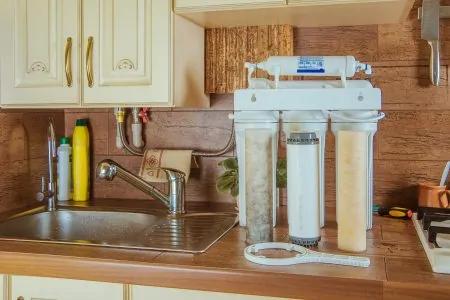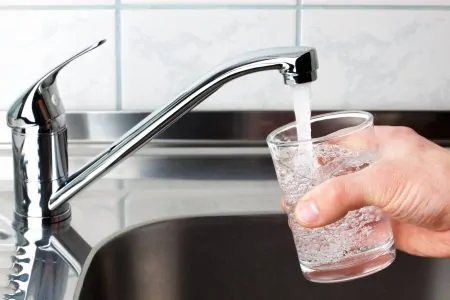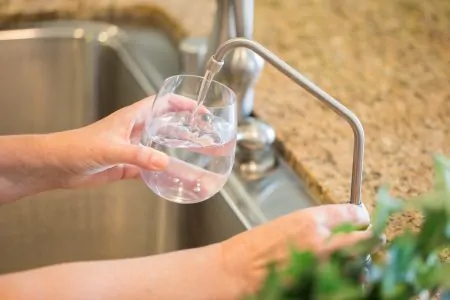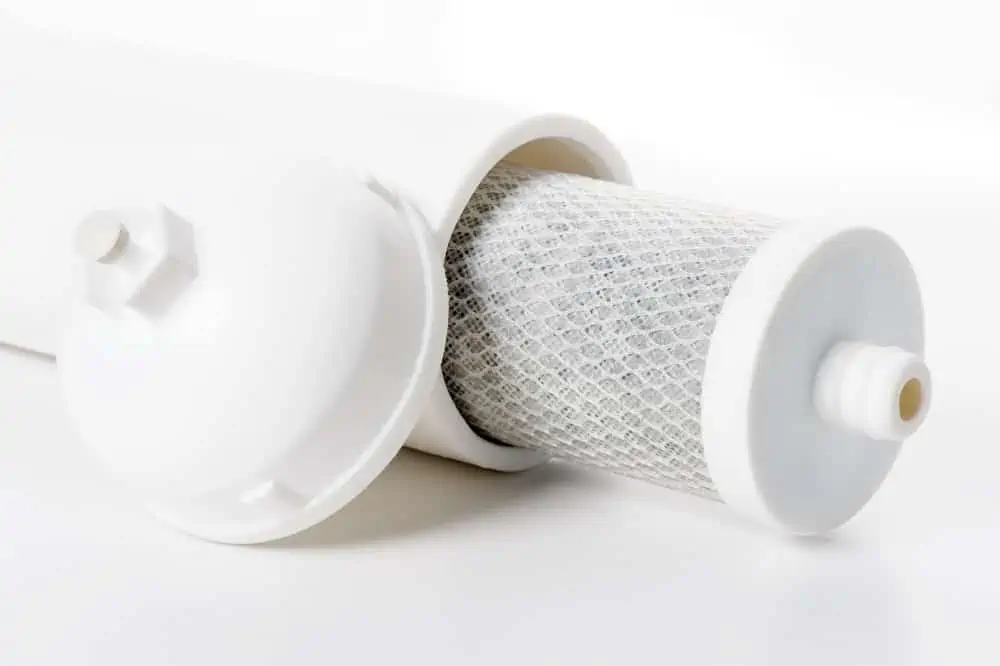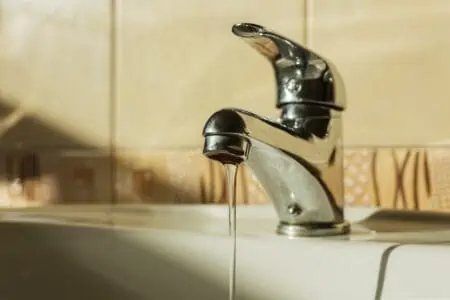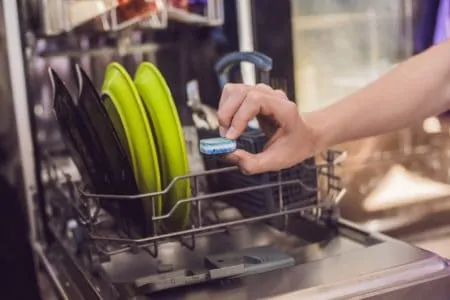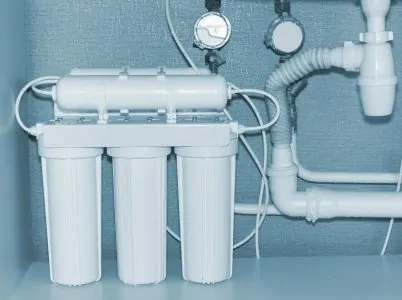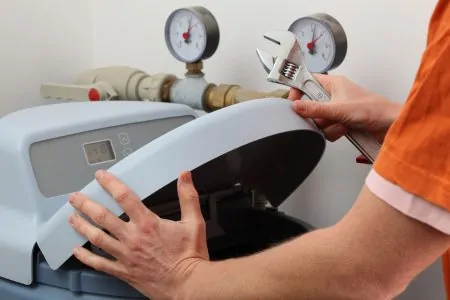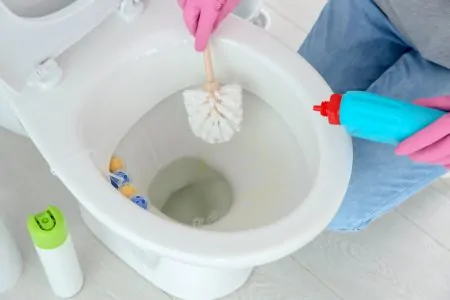More than 80% percent of municipal water supplies in the United States provide hard water (1). Water supplies from wells are likely quite similar, so you might be one of a huge number of people living with hard water (2).
If you live in a hard water area, you might be wondering whether or not you should soften your water. You might be unsure what exactly it is that a water softener even does, and why there are so many different types.
In this article, we will explain the impact of hard water and how a water softener works to address this. We will then explore seven different types of softeners and how they work, to help you find your ideal softener.
Key Takeaways
- Hard water contains dissolved minerals like calcium and magnesium, which can cause white marks, faded clothes, reduced effectiveness of soaps, and scale buildup in appliances.
- Water softeners remove mineral content from hard water, protecting your plumbing and appliances, and can be installed for the whole house or specific outlets.
- There are various types of water softeners, including ion exchange softeners, demand initiated regeneration systems, TAC/NAC systems, chelation systems, magnetic/electronic, reverse osmosis systems, and showerhead filters.
- Choosing the right water softener depends on your water quality, budget, and personal preferences, with some being more eco-friendly or health-conscious than others.
What Are the Effects of Hard Water?
Despite its name, hard water is still a liquid and largely the same as soft water. What separates it from soft water is that it contains more dissolved minerals — most commonly magnesium and calcium. This doesn’t mean hard water is unsafe to drink; in fact, the extra calcium and magnesium are beneficial to your health.
Although hard water can have health benefits, it can be more harmful to your home and clothes. Some of the consequences of hard water include (3):
- White marks: White cloudy marks and stains on dishes, sinks, shower enclosures, glassware, and silverware.
- Faded clothes: Laundry that is left looking faded or dull, and feels stiff to touch or wear.
- Reduced effectiveness: Increased use of soap, shampoo, laundry detergents, and fabric softeners.
- Buildup: Scale buildup in kettles, irons, coffee makers, appliances, bathtubs, faucets, toilets, and sinks.
- Home appliance damage: Damage to pipes, boilers, washing machines, dishwashers, showerheads, and water heaters due to scale buildup.
Ultimately, hard water can cost you money. You may end up buying more cleaning products for your home and personal hygiene as hard water makes soap less effective. A greater concern is that scale buildup in your plumbing and household appliances will reduce the amount of water that can flow through. This means they have to work harder, expend more energy to compensate, and increase energy bills.
Hard water issues are widespread in the United States. However, these problems can be avoided by installing a water softener. Depending on the type of softener you choose, this could be a relatively small investment that will save you money in the long run.
What Is a Water Softener?
Water softeners are units designed to remove the mineral content of hard water, making it safer for your plumbing and appliances. Whole house water softeners are usually installed in a garage, utility room, basement, or wherever else the water supply enters your home. There are also smaller softeners that treat the water at a specific outlet, such as a shower.
The seven different types of water softeners we will explore in this article are:
- Ion exchange softeners
- Demand initiated regeneration systems
- Template Assisted Crystallization (TAC) or Nucleation Assisted Crystallization (NAC)
- Chelation systems
- Magnetic or electronic water softeners
- Reverse osmosis systems
- Showerhead filters
How Does a Water Softener Work?
How a water softener works varies depending on the type you choose. Many softeners remove the mineral content of water and replace it with sodium, such as in an ion exchange softener. There are also units that don’t remove the mineral content but make it unable to stick to surfaces, thus preventing the negative side effects of hard water.
Here are seven of the most widespread water softening solutions:
Ion Exchange Softener
Ion exchange units are currently the most popular type of water softeners. They contain two separate tanks, with each one playing an integral role in the softening process:
Softener Tank
- Water enters the tank: Hard water enters the top of the softener tank and flows down between resin beads, which are coated in sodium. The resin beads have a negative charge and the minerals in the water, such as calcium and magnesium, have a positive charge. The negative and positive ions attract each other (4).
- Ion exchange: This is where the “ion exchange” occurs, as the positively charged minerals in the water adhere to the resin in the softener tank. The magnesium and calcium become attached to the resin, and the sodium on the beads is released. This exchange maintains the status quo of the resin’s electrical charge.
- Soft water: Following this process, the water is softened and flows out of the unit to your home’s outlets and appliances.
- Cleaning with brine: Eventually, the beads in the softener tank will reach their capacities and will be unable to or attract or hold any more minerals. When this limit is reached, the softener tank must be cleaned or regenerated to continue softening water effectively.
Brine Tank
When the softener tank reaches its limit, it is time for the brine tank to go to work.
- Salt released: The digital control can be preset to initiate the cleansing process when necessary. When the time comes, salt is released into the water and is then transferred from the brine tank into the softener tank.
- Further ion exchange: Another ion exchange takes place. This time, however, the opposite exchange occurs and the salt sticks to the resin, releasing the filtered minerals back into the water.
- Flush: The newly mineral-rich water is then flushed out through the unit’s drainage hose.
- Cycle repeats: Once this “rinse cycle” is complete, your water softener can continue achieving its purpose — supplying your home with soft water.
Alternatively, potassium chloride can be used in the brine tank instead of salt. The principle is the same but this reduces the amount of sodium that enters your softened water. This makes it a better option for anyone that needs to control the sodium in their diet. However, it is also more expensive.
Take Note
Replacements are widely available, such as these salt pellets or potassium chloride pellets from Morton.
Demand Initiated Regeneration System
This is a more sophisticated system that tracks your water usage and determines when the unit needs to be flushed to regenerate. These systems are more economical as they prevent you from spending money to replace salt that is wasted when you flush too often. It also means you won’t be left with mineral content if you use more water than usual and your preset rinse hasn’t activated yet (6).
Template Assisted Crystallization (TAC) or Nucleation Assisted Crystallization (NAC)
If you want a healthier solution than salt in your water softener, consider a TAC or NAC system. Sometimes called water descalers or water conditioners, these systems don’t actually remove minerals from your water.
Instead, they alter the minerals in your water into crystals that cannot adhere to your pipes or plumbing appliances.
- Polystyrene: The water flows through polystyrene beads, which serve as a catalyst for crystal formation.
- Crystal growth: The crystals grow on the polystyrene beads.
- Crystals removed: As the crystals become larger, they flow into your plumbing system.
The minerals that cause hardness are still in your water, but they can no longer stick to anything. This means you should no longer encounter issues with minerals becoming attached to your outlets and creating limescale, making the water harmless.
These systems don’t require energy to function and do not require a regeneration process. This should help you save money via reduced water and energy bills compared to ion exchange systems.
Chelation Systems
Chelation systems are water conditioners that don’t require any salt. In these systems, the substance that tackles the water hardness is nitriloacetic acid, or another form of citric or oxalic acid. These chelating agents adhere to minerals in the water and keep them suspended, thus preventing them from collecting on pipes and appliances (7).
Like a TAC system, a chelation system is a descaler rather than a water softener. They are usually found in commercial settings.
Magnetic or Electronic Water Softener
Magnetic or electronic softeners (or descalers) are among the newest types available. They require a power supply and are fitted onto a pipe where the water supply enters your home.
When the water flows past the device, the magnetic fields alter the electromagnetic properties of its mineral content. By doing this, the calcium and magnesium carbonates aren’t attracted to each other. They also won’t stick to your plumbing, preventing limescale build-up.
The effectiveness of these systems is questionable as they don’t remove hardness in the same way as an ion exchange system. Still, they are intended to prevent scale from clogging or damaging your plumbing rather than soften your water, so you can enjoy the best of both worlds.
Reverse Osmosis System
A reverse osmosis system has multiple fine filters that remove solid contaminants from your water. These include calcium and magnesium, as well as other organic and inorganic materials (8).
These systems are attached to a specific water outlet, such as a kitchen or bathroom faucet. They don’t provide whole-house filtration.
Lack Of Minerals
Showerhead Filter
As the name suggests, these are filters that attach directly to your shower head. They provide an easy-to-install option for removing minerals as the water leaves your shower head. They don’t technically soften your water but do prevent contaminants and minerals from reaching your body and damaging your hair.
In terms of your home, this means reduced soap scum and less clogging of your shower head’s nozzle caused by scale build-up.
